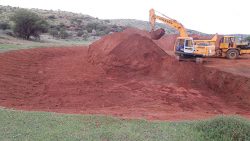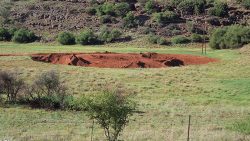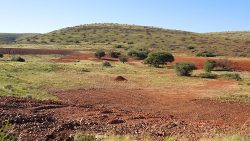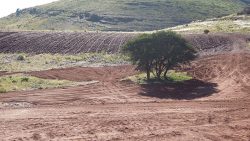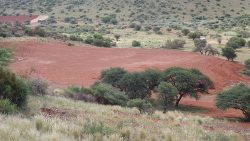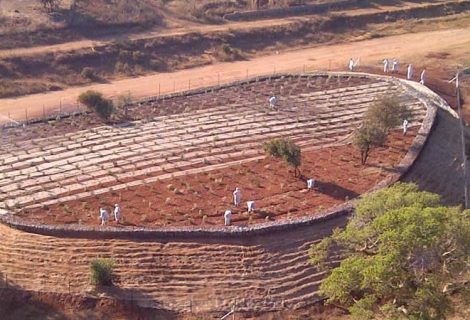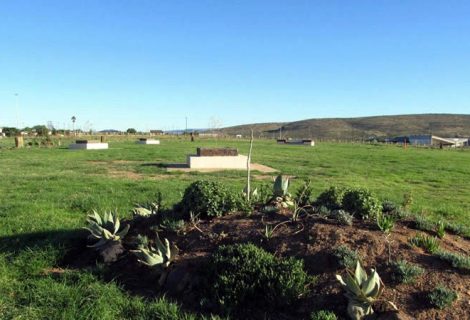Langley Mine is situated on a farm which is approximately 15km outside of the town of Kuruman, Northern Cape. This old asbestos mine has been derelict for the past 30 years.
The site stretches across a 2km distance and contained open quarries, borrowpits, berms and a mine shaft with other concrete structures.
On behalf of the DMR, Mintek and the current farm owner, Enviro-Lite Solutions conducted rehabilitation work to the entire mine site. The main aim of rehabilitation was to restore the mine area as close as possible to its natural and original state. The ultimate land use was to create grass veld grazing land for livestock and wild antelope.
Earthworks
The main purpose of the earthworks was to encapsulate any exposed asbestos fibres and to prepare the area for re-vegetation. The earthworks consisted of:
- Repair & resurface road leading to farmhouse & mining quarry
- Graded v drains for surface runoff on gravel roads
- Reshaping of slopes & berms at mine site (to 18⁰ angle) – 3000m³ of material moved
- Reshaping & lessening gradient at borrowpits – 2000m³ of material moved
- Hauling and stockpiling topsoil at mine site – 3500m³ of soil material
- Spreading & levelling topsoil over areas at mine site
- Haul manure compost to mine site & spread over topsoil
Soil Amelioration and Re-vegetation
- Importing and spreading of kraal manure as compost over the site
- Sewing grass seeds over 15 hectare area
- Grass species selected were palatable for grazing mammals and were well adapted to thrive in the Northern Cape climate
- Indigenous grass veld mix used for seeding – species include:
- Chloris gayana
- Cynodon dactylon
- Eragrostis curvula
- Eragrostis teff
- Digitaria eriantha
- Cenchus cilliaris
- Grass seeds were coated with a scientifically formulated membrane to protect seed and stimulate germination
- Continuous irrigation of newly seeded area
- Shredded Lucerne used on site as a water retention technique
- Steeper slopes were covered with biojute biodegradable matting to mitigate erosion
- Other indigenous shrubs that thrive in the region were introduced to the mine site
















